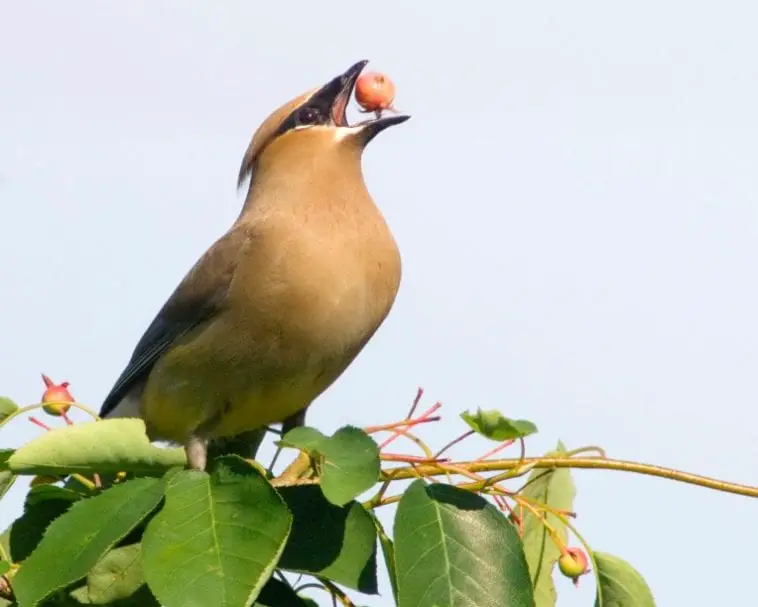Birds do not grind or ingest goodies in an identical method as individuals or other well-known animals make. Knowing birds’ various digestive glands and their digestion method can aid keepers to be more aware of the most suitable goodies for birds and why good nutrition is essential for all birds.
A standard bird’s digestive stretch is normally deemed to comprise of the sections recorded below. You understand what the tongue, beak, and mouth are. The pharynx is the section within the mouth and the esophagus, greatly associated with consuming. The esophagus is the pipe heading down from the pharynx.
How Birds Digest Their Diet
Digestion is a combined procedure that starts with obtaining goodies and concludes when unappetizing consumption is ousted from the bird’s body.
- Getting Goodies: Birds have various nutrition varieties and choices; hence they obtain goodies in several methods. They are entirely devious feeders and will frequently taste countless various goodies. More vigorous varieties will secure preferred goodies origins and a few birds stock goodies for coming feeds. The chewing and absorbing procedure can commence once a bird has obtained goodies.
- Swallowing and Chewing: Birds possess functional beaks to aid them in getting nibbles, though they do not grind as individuals make. Rather, birds will whichever consumer goodies entirely or assuming it is too bulky or uncomfortable to instantly consume; they will tear it into scantier parts. Several birds might split or strip goodies, for example, prey or fruit, or they will apply their beaks to crack up thicker lumps of kernels or large grains.
Occasionally, birds will strike their goodies toward a stone or twig to further split it within bits, and birds might even utilize their hooks to keep goodies as they tear it up. To devour, birds bend their cranium behind to run the bite to the rear of the gorge, and their tongues aid to move the goodies into a safe consumption point. Saliva additionally gives goodies more accessible to consume.
- The Digestive Tract: Various organs constitute the bird’s alimentary canal. From the beak, goodies pass down a tunnel called the esophagus and toward the crop, which collects surplus goodies so the bird can absorb it gradually. The goodies then lead to the proventriculus, which is the initial portion of the stomach, where it is melted by mucus, gastric acid, and other digestive juices.
The gizzard, crushes the goodies into tinier bits, frequently with the help of grit, for example, gravel or little rocks the bird has consumed earlier. Whether the goodies are especially firm, it might pass within the proventriculus and the gizzard numerous events for more effective digestion. Once the goodies are adequately crushed down, it passes within the small intestine, where the pancreas and liver aid with digesting nourishments.
Subsequent is the large intestine, which is pretty small for the majority of birds. In which the small and large intestines meet are the ceca, two sacks that further consume some excess water from the goodies, and complete the digestive procedure.
- Waste: Following absorption, some leftover matter, both solid and liquid, crosses within the cloaca to be discharged from the bird’s trunk. For several birds, decay outputs can likewise be ousted from the guts appearing as pellets. Tough husks, hair, and bones, and other elements that cannot move within the bird’s intestines are compressed into a tiny, oval marble of matter (the pellet) and vomited through the beak.
The course it gets a bird to ingest a food varies on numerous agents, counting the variety of goodies and the bird kinds devouring it. As the overall digestive tract is identical for every bird, the dimension and form of various organs, especially the gizzard and crop, likewise alter for various bird varieties.
The digestive system of birds
Peak or Mouth
Birds utilize their bill to sustain themselves. Each goodies arriving the bird’s body initially crosses within the bill. Birds possess no tusks; therefore, they cannot grind goodies.
But, salivary glands can be located within the bill, which helps to soften goodies, enabling them to be consumed efficiently.
Esophagus
The esophagus is a pliable pipe that attaches the bill to the remainder of the bird’s digestive tract. It is accountable for carrying goodies from the muzzle through the crop and of the crop toward the proventriculus.
Buche
The Buche is a bulge of the esophagus placed in the area of the throat of the bird. Consumed goodies and liquid are collected in this pocket until they can move to the remainder of the digestive tract.
When the crop is dry or virtually blank, it conveys signs of starvation to the brain for the bird to consume more goodies.
The two-chambered stomach:
The proventriculus:
The abdomen is an astounding matter comprising of two chambers. The proventriculus is the anterior chamber. It emits an acid for tearing down goodies and is best evolved in birds that eat whole fish and different creatures holding bones that should be absorbed. Whether you remember bit chemistry, you’ll understand how unusual it is that bird abdomen-acid can possess a pH as flat as 0.2. In most of North America, there’s a species of bird identified as a shrike, which consumes tiny creatures, particularly songbirds and rodents. A shrike’s well-refined prime stomach-chamber can absorb a whole rodent in merely three hours!
The gizzard:
The bird bellies’ secondary chamber is recognized as the gizzard. Whether you’ve ever tasted a chicken gizzard, you understand how firm and resilient it is. To achieve what the gizzard causes, it certainly should be firm, for the gizzard’s central role is to pound and absorb robust goodies. But the gizzard comprises of extremely sturdy tissues; it solely can’t smash anything the common bird feeds; you apprehend how firm raw rice and maize grains are, and these aren’t even counted tough kinds of seed.
Small Intestine
The succeeding measure of digestion happens in the duodenum, and the nourishments issued by the goodies are largely incorporated in the lower section of the small intestine.
Ceca
The caeca comprise of two hidden pouches where the large and small intestine is connected. Several trails of water held in the ingested goodies are reassimilated at this period.
An added essential role of the caeca is the fermentation of the goodies wastes that have not still completed being absorbed. Throughout the fermentation method, the caeca create the eight Vitamins B (vitamin B12, folic acid, biotin, pyridoxine, pantothenic acid, niacin, riboflavin, and thiamine) and fatty acids.
Large Intestine or Colon
Although the title implies that the large intestine is greater than the small intestine, it is frankly smaller. The chief role of the large intestine is to digest the leftover excess of water existing in the absorbed matter.
Cloaca
Scraps of absorption are combined with decay from the urine (urinary system) in the sewer. Birds normally discharge dirty stuff from the digestive system in addition to uric acid crystals emerging from the method of the excretory system.
While birds do not excrete, they discharge ruins from uric acid appearing as a pale, buttery paste.
The excretions of the birds can show in which case of wellness they denote. The texture and shade of the fecal matter show the circumstances following which the digestive tract is placed.
Summary
The digestive system of each creature is of essential significance for the refinement of the goodies that the pet devours. Within the digestive tract, birds can incorporate all the nourishments their bodies require to develop, sustain, and propagate. Knowing bird digestion is a vast measure toward giving solely the most suitable goodies for birds to consume and maintaining them well-nourished and well-fed.


